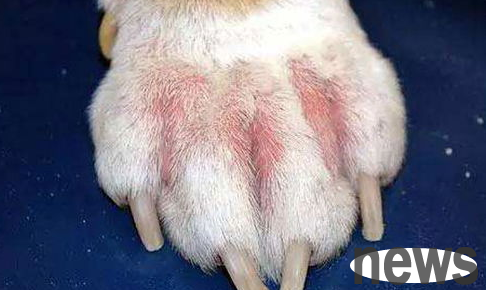1. Commonly used examination methods [1. Clinical examination method] 1. Skin scraper examination Skin scraper is one of the most commonly used skin disease detection methods in clinical practice in veterinary medicine. This method is simple and fas...
1. Commonly used examination methods
[1. Clinical examination method]
1. Skin scraper examination

Skin scraper is one of the most commonly used skin disease detection methods in clinical practice in veterinary medicine. This method is simple and fast and can identify multiple types of parasitic infections. Although skin scrapers not provide diagnostic evidence every time, they are one of the most common methods for skin disease detection due to their simplicity and inexpensiveness.
Some clinical workers like to reuse blunt blades for skin scraping, but as people's awareness of prevention of infectious diseases (Baltonite, feline leukemia, feline AIDS, herpes virus, papillomavirus, etc.) increases, this phenomenon will gradually decrease.
Skin scrapers are divided into superficial skin scrapers and deep skin scrapers
Shallow skin scrapers are used for the observation of scabies, cyst mites, ear mites, chiggers
Skin scrapers are mainly used for the diagnosis of demodex disease
2. Cytological examination
Skin cytology examination is the second most commonly used skin disease detection technology, mainly used for the identification of bacteria, fungi, infiltrating cells, tumor cells and spiny cells.
3. Transparent tape method:
can be used for the detection of various skin diseases.
4. Ear test test:
can check whether there are exudative lesions inside the ear canal with normal appearance, and is used to identify whether there are parasitic, fungal, and bacterial infections in the external ear canal.
5. Hair removal examination:
Hair plucking examination is used to observe the condition of the hair, and can complete the evaluation of the body's itching state, fungal infection, pigmentation, growth cycle, etc.
6. Wood's lamp inspection:
Woo The light source used by Wood's lamp is a special ultraviolet light with a wavelength of 340-450nm. The ultraviolet light in this band will not damage the skin or eyes, and can cause some microorganisms such as tryptophan metabolites produced by microspores to emit apple green fluorescence. However, not all microspores will produce this cellular metabolite, and only about 50% higher can be detected by the Wood's lamp method. Wood's lamp examination failed to detect Trichophyton and gypsum-like Microsporidium.
7. Slide compression diagnosis method
is mainly used to distinguish vasodilation and subcutaneous hematoma.
【2. Special examination method】

1. Culture method:
is used to identify specific pathogenic microorganisms
DTM (fungal detection medium) is used for the isolation and identification of skin fungi. The skin fungus detection medium is composed of special materials, which can inhibit the growth of bacteria, and the culture medium turns red when the fungi exists.
The culture of bacteria/fungus plays an important role in the diagnosis of skin diseases. Any deep cellulitis, especially cellulitis that has formed a leaky tract, should be cultured with bacteria/fungus. When differential diagnosis is performed, cysts and tumors should also be cultured and tested for pathogenic microorganisms.
2. Biopsy:
For veterinary workers, biopsy is a very headache-inducing detection technology. The correct choice of lesion sites is of great significance to improving the reliability of skin biopsy results.
Skin biopsy can provide the most useful information in a very short time. Although skin histopathology cannot correctly identify the cause, they can characterize skin lesions into 1-6 conventional categories: tumorigenic, infectious, immune-mediated, endocrine-like, keratinized defects, and allergic.
3.PCR technology:
polymerase chain reaction can amplify the DNA in the sample crystal. Compared with the real-detection technology, PCR technology has higher sensitivity and specificity.
4. Immunohistochemistry:
Irreplaceable methods for diagnosing autoimmune skin diseases
5. Allergy experiments:
are used in the following situations: 1. Animals with clinical symptoms of allergic skin diseases. 2. Animals with biopsy/skin scrapings indicate allergic status 6. Therapeutic diagnostic method
determine skin allergens or infectious agents.